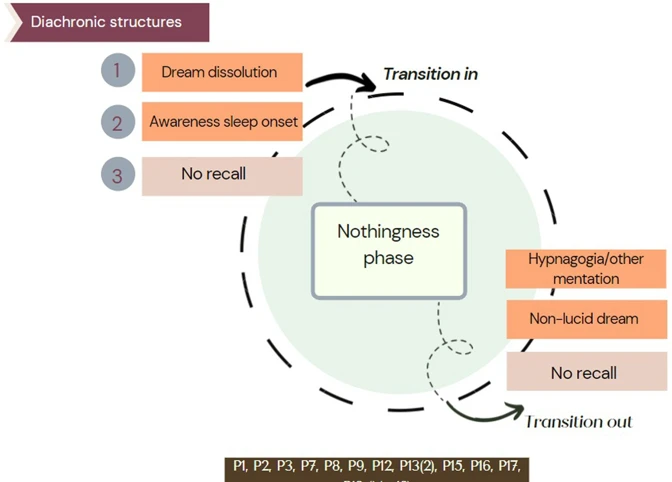Dreams have long captivated human curiosity and imagination. They are often seen as windows into our subconscious minds, revealing hidden desires, anxieties, and emotions. Dream interpretation, the practice of assigning meaning to dreams, has a rich history across cultures and has been examined through various scientific and psychological perspectives. However, the validity of dream interpretation remains a subject of debate. In this article, we will delve into the history, theories, scientific research, common symbols, personal factors, professional practices, challenges, and cultural variations surrounding dream interpretation. We will separate fact from fiction, exploring the benefits and impact of interpreting dreams, while acknowledging the limitations and the enigmatic nature of this intriguing phenomenon.
The History of Dream Interpretation

The history of dream interpretation stretches back thousands of years, encompassing a wide range of cultures and belief systems. In ancient societies such as Egypt and Mesopotamia, dreams were viewed as messages from the gods or reflections of the soul. The significance of dreams was also emphasized in religious texts, such as the Bible and the Quran. During the Renaissance period, figures like Sigmund Freud and Carl Jung started to develop psychological theories on dream analysis. Freud’s psychoanalytic theory emphasized the interpretation of dreams as a means of uncovering repressed desires and conflicts, while Jung explored the archetypal symbols present in dreams. Today, dream interpretation continues to evolve, incorporating contemporary psychological and scientific perspectives. Yet, while the practice has a long and diverse history, it remains a deeply subjective and enigmatic field.
Theories in Dream Interpretation
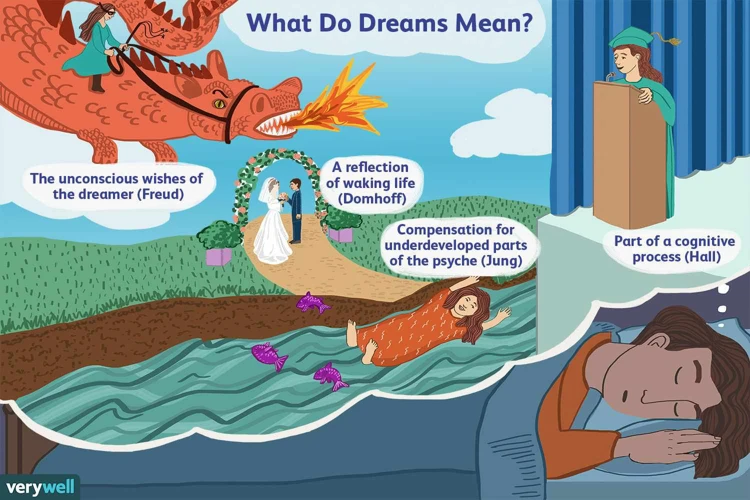
Dream interpretation has been shaped by various theories and approaches throughout history. One prominent theory is Freudian theory, proposed by Sigmund Freud, which suggests that dreams serve as a pathway to the unconscious mind, where repressed desires and unresolved conflicts reside. Freud believed that dreams contain latent content that needs to be interpreted to reveal its hidden meaning. Another influential theory is Jungian theory, developed by Carl Jung, which focuses on the symbolic nature of dreams. Jung believed that dreams tap into the collective unconscious and contain archetypal symbols that are universal across cultures. Contemporary approaches to dream interpretation incorporate elements from both Freudian and Jungian theories, as well as draw upon scientific research and cognitive perspectives to understand the functions and meanings of dreams. The interpretation of dreams is a complex and multifaceted process that continues to evolve as new insights and understandings emerge.
Freudian Theory
Freudian theory, developed by Sigmund Freud, revolutionized the field of dream interpretation. According to Freud, dreams provide a gateway to the unconscious mind, revealing hidden desires, conflicts, and unresolved issues. He believed that dreams were symbolic representations of repressed sexual and aggressive urges. Freud introduced concepts such as manifest content (the actual storyline of the dream) and latent content (the hidden, symbolic meaning of the dream). Freud’s theory proposed that dreams allowed for the fulfillment of taboo or socially unacceptable desires in a disguised form. He placed great emphasis on deciphering the symbolic elements of dreams through analysis, aiming to bring repressed content into conscious awareness. While Freud’s theories have had a profound impact on the field of dream interpretation, they have also faced criticism and alternative perspectives have emerged.
Jungian Theory
Jungian theory, developed by renowned psychologist Carl Jung, offers a unique perspective on dream interpretation. Jung believed that dreams were not just expressions of individual desires and conflicts, but also reflections of universal archetypes and collective unconscious. According to Jung, dreams contain symbols and images that represent common themes and experiences shared by humanity. This theory emphasizes the importance of understanding the personal and cultural significance of symbols in dreams. By exploring the symbols and their connections to the dreamer’s life, Jungian analysis aims to uncover deeper meanings and insights. For example, a dream about a dead deer may symbolize a loss or a sacrifice, while a dream of swimming could represent a sense of freedom and emotional balance. Jungian theory provides a framework for exploring the symbolic language of dreams and delving into the depths of the unconscious mind.
Contemporary Approaches
Contemporary approaches to dream interpretation draw from a variety of disciplines and perspectives. One prominent approach is cognitive psychology, which focuses on understanding how thoughts, perceptions, and emotions shape dream content. Cognitive psychologists examine the role of memory, attention, and problem-solving in dreams. Another approach is the neuroscientific perspective, which utilizes advancements in brain imaging technology to study the neural correlates of dreaming. Research in this field explores the brain regions involved in dreaming, the relationship between dream content and waking experiences, and the impact of dreaming on overall cognitive function. Additionally, there are alternative approaches that incorporate mindfulness, spirituality, and personal growth into dream interpretation. These approaches emphasize the use of dreams for self-reflection, personal insight, and spiritual connection. Although contemporary approaches bring new insights and methods to dream interpretation, the subjective nature of dreams and their elusive meanings continue to be central challenges in the field.
Scientific Research on Dream Interpretation
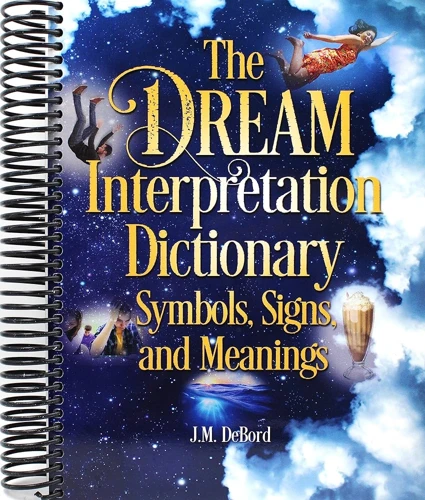
Scientific research on dream interpretation has shed light on the fascinating realm of our subconscious minds. The role of neuroscience in understanding dreams has been pivotal, with advancements in brain imaging techniques allowing researchers to study brain activity during sleep and dream states. Experimental studies have explored various aspects of dream analysis, such as the impact of external stimuli on dreams, the relationship between dreams and memory consolidation, and the psychological functions of dreaming. However, it is important to note that the scientific study of dreams has limitations and challenges. Critics argue that subjective experiences in dreams make it difficult to generalize findings, and the complex nature of dreams makes them resistant to empirical research. Despite these limitations, scientific inquiry continues to deepen our understanding of the mysteries and potential meanings behind the images and narratives that unfold in our dreams.
The Role of Neuroscience
The role of neuroscience in dream interpretation has shed new light on the understanding of the brain’s activity during sleep. Through techniques such as electroencephalography (EEG) and functional magnetic resonance imaging (fMRI), researchers have been able to observe brain patterns and activity during different stages of sleep. These studies have revealed the involvement of various brain regions and neurotransmitters, including the prefrontal cortex, amygdala, and serotonin, in the generation and processing of dreams. While neuroscience offers valuable insights into the physiological mechanisms behind dreaming, it does not provide a complete explanation for the complex and symbolic nature of dreams. It serves as one piece of the puzzle in comprehending the intricate relationship between the brain, consciousness, and the dreaming experience.
Experimental Studies
Experimental studies in the field of dream interpretation have aimed to uncover the underlying mechanisms and functions of dreams. Scientists have conducted various experiments to explore the relationship between dream content and waking life experiences. One approach involves dream diaries, where participants record their dreams upon waking. Researchers then analyze the diaries to identify patterns and themes. Another method involves manipulation of waking experiences to see if they influence dream content. For example, participants may be exposed to certain stimuli or given specific tasks before sleep to observe their impact on dream content. Additionally, neuroimaging techniques such as functional magnetic resonance imaging (fMRI) have been used to study brain activity during dreaming, providing insights into the neurological processes involved. These experimental studies aim to shed light on the purpose and significance of dreams, adding scientific rigor to the field of dream interpretation.
Critique and Limitations
Critiques and limitations surrounding dream interpretation arise from both scientific and subjective perspectives. While dream analysis can provide insights into individuals’ thoughts and emotions, it is important to acknowledge its subjective nature. The symbolic nature of dreams can make their interpretation highly personal and open to individual biases. Additionally, the lack of scientific consensus on the specific mechanisms and functions of dreaming limits the validity and generalizability of interpretations. Another limitation is the difficulty in verifying the accuracy of dream interpretations due to the inherently private and personal nature of dreams. Cultural and societal influences can shape the meanings assigned to symbols and themes in dreams, leading to variations in interpretation. Despite these limitations, dream interpretation continues to hold value for many individuals as a tool for self-reflection and personal growth.
Common Symbols in Dreams
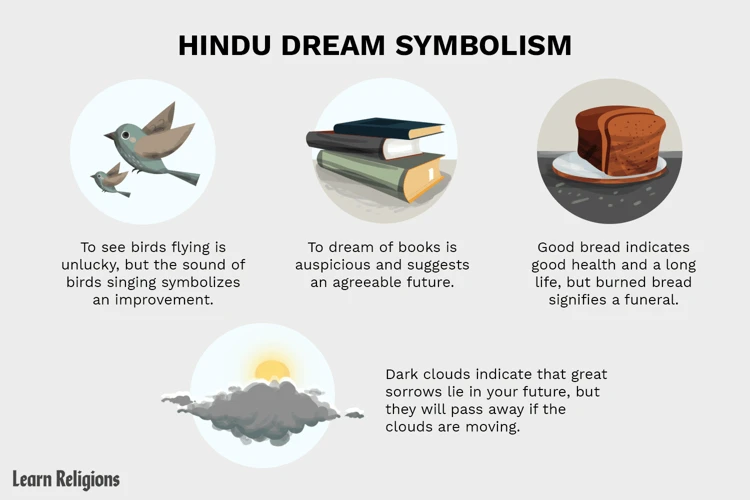
In dreams, certain symbols often emerge and recur, carrying potential meaning and significance. These symbols can vary across individuals and cultures but may also share common interpretations. For example, water, such as rivers or oceans, is often associated with emotions and the unconscious mind. It can represent emotional turbulence, the flow of life, or a desire for renewal and change. Another common symbol is animals, such as snakes symbolizing transformation or renewal, or owls representing wisdom and intuition. Dreams involving falling are often linked to a loss of control or feelings of insecurity. Similarly, dreams about being chased may signify avoidance or the need to confront unresolved issues. It’s important to note that the meaning of these symbols can also be influenced by personal experiences and context. For a more specific interpretation of symbols, it’s helpful to consider the individual’s unique associations and emotions within the dream.
Misconceptions and Myths
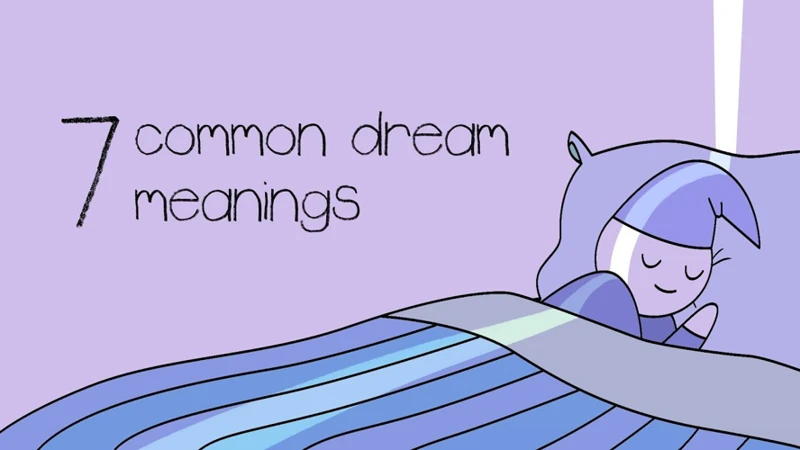
Misconceptions and myths surround the realm of dream interpretation, often leading to misunderstandings and false assumptions. One common misconception is that dreams are always prophetic or predictive of future events. While dreams can provide insight into our subconscious thoughts and emotions, they do not possess a supernatural power to foresee the future. Another myth is that specific symbols in dreams universally hold fixed meanings. In reality, the interpretation of symbols can vary greatly depending on personal experiences, cultural backgrounds, and individual associations. For example, while dreaming of a dead deer may be seen as a bad omen in some cultures, others may interpret it as a symbol of transformation or renewal. It is crucial to approach dream interpretation with an open mind, recognizing that each dreamer’s unique perspective shapes the meaning and significance attributed to their dreams.
Personal Factors Influencing Dream Interpretation
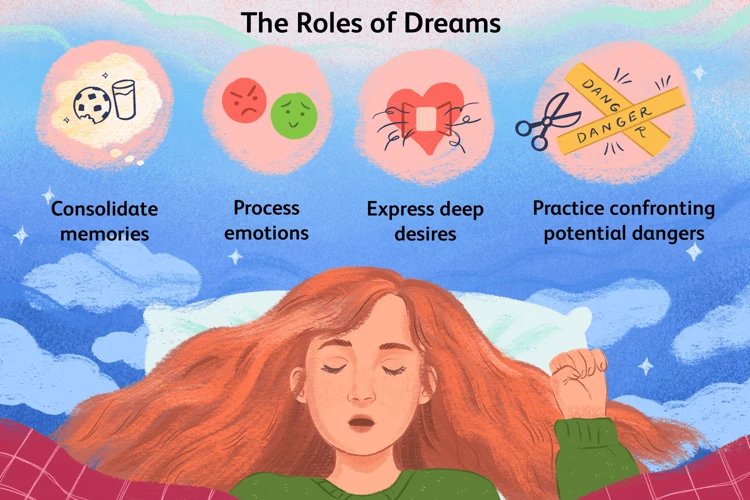
Personal factors play a significant role in influencing dream interpretation. One such factor is emotional state. Emotions can strongly impact the content and tone of dreams, with sadness, fear, or joy often manifesting in vivid and intense dream experiences. Personal experiences also shape dream symbolism and meaning. For example, someone who has had a traumatic experience involving water may have dreams related to drowning or swimming that carry deeper significance. Additionally, cultural background can influence dream interpretation, as cultural beliefs and symbols shape how dreams are understood and interpreted. It is important to consider these personal factors when analyzing dreams, as they provide valuable context and insight into the individual’s subconscious mind.
Emotional State
The emotional state of an individual plays a significant role in dream interpretation. Dreams often reflect and amplify our emotional experiences, providing a window into our inner world. Strong emotions such as fear, joy, sadness, or anxiety can manifest vividly in dreams, leading to intense and memorable dream scenarios. For example, a person who experiences a period of stress and anxiety may have dreams filled with chaotic or threatening situations. Similarly, someone who is happy and content may have dreams that are filled with positive and uplifting imagery. The emotional state of the dreamer can influence the symbolism and narrative of the dream, making it essential to consider emotions when interpreting the meaning behind a dream. Additionally, dreams can also present an opportunity for emotional processing and healing, allowing individuals to explore and resolve unresolved emotions and conflicts from their waking life.
Personal Experiences
Personal experiences play a significant role in dream interpretation. Each individual brings their own unique background, memories, and emotions to their dreams, shaping the meaning they find within them. Dreams often incorporate elements from our daily lives, reflecting our hopes, fears, and concerns. For example, someone who has recently experienced the loss of a loved one may have dreams involving death or mourning. Similarly, a person who has a fear of water may have recurring dreams of drowning. These personal experiences can serve as valuable clues in deciphering the meaning behind our dreams. By reflecting on our emotions and connecting them to events or situations in our waking lives, we can gain deeper insights into the symbolism and messages that our dreams may hold.
Cultural Background
Cultural background plays a significant role in dream interpretation. Different cultures attribute varying meanings to common dream symbols, leading to unique interpretations. For example, in Western cultures, dreaming of a dead deer may symbolize loss or the end of a phase, while in some Indigenous cultures, it can represent a spiritual encounter or a message from ancestors. Additionally, cultural narratives and beliefs shape the significance assigned to certain dream experiences. For instance, in some cultures, dreaming of swimming may be associated with freedom and emotional well-being, while in others, it may indicate a need for caution or a potential challenge ahead. Understanding cultural background is crucial in interpreting dreams, as it allows for a more comprehensive and nuanced analysis of their symbolism and meaning.
Professional Dream Interpretation

Professional dream interpretation is a field that involves trained individuals who specialize in analyzing and deciphering the meaning behind dreams. Psychologists and psychiatrists often incorporate dream analysis into their therapeutic practices, utilizing various psychological frameworks to help clients explore the symbolism and underlying emotions in their dreams. Dream analysis therapists, on the other hand, focus specifically on interpreting dreams and guiding individuals through the process of understanding their subconscious thoughts and feelings. Additionally, alternative practitioners, such as holistic therapists and metaphysical practitioners, may offer their own unique approaches to dream interpretation, drawing from spiritual, mystical, or energy-based perspectives. These professionals aim to assist individuals
Subscribe to Our Newsletter
Sign up to receive the latest news and updates.
Psychologists and Psychiatrists
Psychologists and psychiatrists play a crucial role in the realm of dream interpretation. They approach dreams from a psychological perspective, using various therapeutic techniques to understand their meaning and significance. Professionals in these fields often utilize techniques such as psychoanalysis, cognitive-behavioral therapy, and dream analysis therapy to help individuals explore the deeper layers of their dreams. By examining the symbols, emotions, and narratives present in a person’s dreams, psychologists and psychiatrists can gain insights into their subconscious thoughts and emotions, ultimately aiding in personal growth and self-discovery. Dream interpretation sessions with professionals in these fields can provide a safe and supportive environment for individuals to explore and understand the messages hidden within their dreams. This can lead to a deeper understanding of oneself and can assist in addressing psychological and emotional challenges.
Dream Analysis Therapists
Dream analysis therapists are professionals who specialize in helping individuals understand the meaning and significance of their dreams. These therapists typically have a background in psychology or counseling and use various techniques to interpret dreams in a therapeutic context. They may encourage clients to keep dream journals, engage in guided visualizations, or participate in dream reenactments. By exploring the symbolism, emotions, and experiences present in dreams, dream analysis therapists aim to provide insight, self-awareness, and personal growth. While the effectiveness of dream analysis therapy may vary for each individual, many people find value in the process of delving into their dreams and gaining a deeper understanding of their subconscious mind.
Alternative Practitioners
Alternative practitioners play a significant role in the realm of dream interpretation. These practitioners often incorporate spiritual or metaphysical approaches to understanding dreams and their meanings. They may draw upon practices such as astrology, numerology, tarot readings, or crystal healing to interpret dreams. Some alternative practitioners believe that dreams provide access to deeper levels of consciousness, allowing for a connection to the spiritual realm. They may encourage individuals to keep dream journals, engage in meditation or visualization exercises, and seek guidance from spirit guides or higher powers. While their methods may differ from traditional psychological approaches, alternative practitioners offer a unique perspective on dream interpretation, catering to those who seek a more holistic and esoteric understanding of their dreams.
Interpreting Dreams Personally

Interpreting dreams personally can be a powerful tool for self-reflection and introspection. When exploring the meaning of our dreams, it is important to engage in self-reflection and journaling. By writing down our dreams in detail, we can capture the intricacies of the dream narrative, the emotions felt during the dream, and any symbols or recurring themes that stand out. Paying attention to these emotions is crucial, as they often hold valuable insights into our subconscious thoughts and feelings. Additionally, exploring personal associations with the symbols and elements in our dreams can provide further clarity and understanding. This process allows us to tap into our own unique experiences, memories, and cultural background, ultimately enabling a more nuanced interpretation of our dreams. While dream interpretation is deeply personal, it can offer valuable insights and enhance our self-awareness.
Self-Reflection and Journaling
Self-reflection and journaling serve as powerful tools for interpreting dreams on a personal level. By engaging in self-reflection, individuals can explore their emotions, thoughts, and experiences surrounding a dream. This involves asking oneself questions such as “How did the dream make me feel?” or “What personal associations do I have with the symbols in the dream?” Journaling allows for the documentation and analysis of dreams over time, enabling patterns and recurring themes to emerge. Through the act of writing, individuals can gain insight into their own subconscious minds and uncover hidden meanings within their dreams. By combining self-reflection and journaling, individuals can develop a deeper understanding of their dreams and their own inner selves. Remembering to approach dream interpretation with an open mind and a willingness to explore one’s own psyche can greatly enhance the personal insight and growth that can be derived from this practice.
Paying Attention to Emotions
Paying attention to emotions is a crucial aspect of interpreting dreams. Emotions experienced within dreams can provide valuable insights into our subconscious thoughts and feelings. When analyzing dreams, it is essential to focus on the intensity and quality of emotions experienced during the dream state. For example, a dream filled with fear and anxiety may suggest underlying stress or unresolved fears in waking life. Similarly, dreams that evoke feelings of joy, excitement, or love may be reflective of positive emotions or gratifying experiences. By exploring and acknowledging these emotions, individuals can gain a deeper understanding of their dreams and potentially uncover important messages or symbols.
Exploring Personal Associations
Exploring personal associations is a key aspect of dream interpretation. When analyzing dreams, it is important to consider the unique meanings and symbols that hold significance for the individual. This involves reflecting on personal experiences, memories, and emotions that may be connected to the dream content. For example, if someone dreams of swimming, they can examine their own associations with swimming, such as feelings of relaxation, freedom, or fear. By understanding these personal connections, individuals can gain deeper insights into the subconscious messages conveyed in their dreams. This process of self-reflection and exploring personal associations facilitates a more personalized and meaningful interpretation of dreams.
Challenges in Dream Interpretation

Challenges in dream interpretation arise from the inherent complexities of the human mind and the elusive nature of dreams themselves. One of the main obstacles is the individual and subjective nature of dream experiences. Dreams are highly personal and unique to each individual, making it difficult to establish universal meanings or symbols. Additionally, dreams can be influenced by a range of factors, such as personal experiences, cultural backgrounds, and emotional states, further complicating the interpretation process. Another challenge lies in the symbolic nature of dreams. Symbols in dreams can vary in meaning depending on context and personal associations, making it challenging to discern their true significance. Dreams can be fragmented, illogical, or abstract, making it challenging to extract coherent narratives or messages. Despite these challenges, dream interpretation continues to be an intriguing and valuable area of exploration for individuals seeking self-reflection and personal growth.
Benefits and Impact of Interpreting Dreams

Interpreting dreams can have a range of benefits and impacts on individuals. One of the primary benefits is gaining insight into one’s unconscious mind and emotions. By analyzing dreams, individuals can uncover hidden desires, fears, and unresolved conflicts. This self-awareness allows for personal growth and the opportunity to address emotional issues. Dream interpretation can also provide a sense of validation and comfort, as dreams may reflect experiences and thoughts that are difficult to process consciously. Additionally, interpreting dreams can enhance problem-solving abilities by tapping into the subconscious mind’s creative problem-solving capabilities. It can also serve as a therapeutic tool, aiding in the exploration and resolution of psychological and emotional challenges. However, it is essential to approach dream interpretation with an open mind and recognize that personal interpretations may vary.
Cultural Variations in Dream Interpretation
Cultural variations in dream interpretation demonstrate the diverse ways different societies perceive and assign meaning to dreams. For example, in Native American cultures, dreams are considered sacred and are believed to contain messages from ancestors or the spirit world. In Chinese culture, dreams are often seen as symbolic and are interpreted using traditional symbols and imagery. Hindu traditions view dreams as a reflection of one’s karma and spiritual progress. In Western cultures, dreams have been analyzed through psychological frameworks such as Freudian or Jungian theories. These cultural differences highlight the influence of societal beliefs, values, and mythologies on the interpretation of dreams. Studying and comparing these variations provides valuable insights into how our cultural backgrounds shape our understanding of the dream world and its significance.
Conclusion
In conclusion, dream interpretation continues to captivate our fascination and curiosity. While the historical roots of dream interpretation trace back to ancient civilizations and have evolved through psychological theories, the validity and accuracy of interpreting dreams remain elusive. Scientific research, particularly in the fields of neuroscience and experimental studies, has shed some light on the mechanisms of dreaming, but definitive answers regarding the true meaning and purpose of dreams remain elusive. Personal factors, such as emotional state, personal experiences, and cultural background, play a significant role in the interpretation of dreams. Professional dream interpreters, including psychologists, therapists, and alternative practitioners, offer their expertise for those seeking deeper insights into their dreams. However, the subjective nature of dream interpretation poses challenges and limits our ability to uncover universal meanings. Ultimately, interpreting dreams should be approached with an open mind, recognizing their potential to provide personal insights, but also understanding their inherent mystery and nuance.
Frequently Asked Questions
1. Can dreams predict the future?
Dreams are not reliable predictors of the future. While some people claim to have had dreams that foreshadowed events, there is no scientific evidence to support the idea that dreams can accurately predict the future.
2. Are all dreams symbolic?
Not all dreams are symbolic. Dreams can be a mix of memories, thoughts, and emotions experienced during the day. Some dreams may have symbolic elements, while others may be more literal in nature.
3. Do recurring dreams have deeper meaning?
Recurring dreams may indicate that there are unresolved issues or emotions in your life. However, it is important to remember that dream interpretation is subjective, and the meaning of recurring dreams can vary from person to person.
4. Do nightmares have a specific significance?
Nightmares often reflect fear, anxiety, or stress. They can be influenced by past traumas or current life experiences. However, the significance of nightmares varies from person to person, and they do not always have a specific meaning.
5. Can dreams help in problem-solving?
Dreams can sometimes provide insights or perspectives that aid in problem-solving. By processing emotions and thoughts during sleep, the mind can approach problems from different angles. However, it is not guaranteed that a solution will be found through dream analysis.
6. Are there universal symbols in dreams?
While there are some symbols that appear commonly in dreams, such as falling or flying, the interpretation of symbols can be highly subjective. Personal experiences, cultural background, and individual associations play a significant role in determining the meaning of symbols in dreams.
7. Can dream interpretation be learned?
Interpreting dreams is a skill that can be developed with practice and study. Some people find value in keeping dream journals, reflecting on emotions, and exploring personal associations to enhance their understanding of their dreams. However, it is important to approach dream interpretation with an open mind and recognize that it is an interpretive process.
8. Are there any dangers in relying too heavily on dream interpretation?
Relying too heavily on dream interpretation can lead to the misinterpretation of dreams or the drawing of false conclusions. Dreams are subjective experiences and should not be taken as absolute truths. It is important to balance dream exploration with other methods of self-reflection and understanding.
9. Can dream interpretation be therapeutic?
For some individuals, dream interpretation can be a therapeutic tool. Exploring the symbols, emotions, and themes in dreams can provide insights into one’s subconscious mind and promote self-awareness. However, it is essential to work with trained professionals when using dream interpretation as part of therapeutic practice.
10. Are there cultural differences in dream interpretation?
Yes, there are cultural differences in dream interpretation. Different cultures may have distinct beliefs, symbols, and practices surrounding dreams. It is important to consider cultural context when interpreting dreams, as meanings and interpretations can vary greatly.

